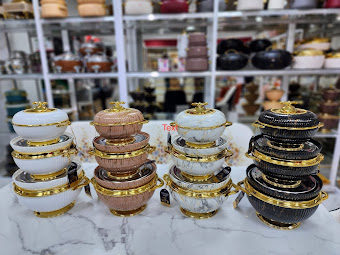How American politics killed off swing voters
One of my obsessions in American politics is the way the nature of partisanship is changing — the way it's getting harder, more extreme, and more personal.
The transformation is easy to miss because, superficially, we had Democrats and Republicans 60 years ago, and we have Democrats and Republicans today, and haven't they always argued?
But here's a sentence that shows just how much has changed over the past half-century: "Pure independents were more stable in their party support across 2000–04 than strong partisans were across 1972–76 and about as stable as strong partisans across 1956–60."
The observation comes from political scientist Corwin Smidt, and it's worth dwelling on for a moment. It means that voters who told pollsters they were "strong" partisans in the '50s were about as likely to vote for the other party as "independent" voters are today.
That sounds ridiculous. But as Smidt writes, it actually makes perfect sense. What's changed here isn't the voters; it's the parties.
Why today's independents are so partisan
A paradox of modern politics is that 1) more Americans than ever are identifying as independents even as 2) fewer Americans than ever switch the party they vote for between elections.
Today's self-identified independents, in other words, aren't very independent — they're actually predictably partisan, at least in the way they vote.
One interpretation of this is that so-called independents are lying — they're not really independent, they're actually Democrats or Republicans in disguise.
But Smidt argues that the fault is in our parties, not in our voters. The two parties have become so polarized, and the choice between them has become so clear, that pretty muchevery kind of voter reliably votes for one party or the other. That's true whether they call themselves independents or partisans, and it's true even when they don't pay attention to politics. This is probably the key chart:
The data comes from the American National Elections Survey — a massive survey conducted after every election. One of the questions asks whether voters felt like they really understood the differences the two parties had on the issues.
What Smidt found, looking at responses to that question over time, was that the voters were becomingmuch more aware of how the two parties differed. The change was so sharp, he writes, that "independent and inattentive voters exhibit an awareness of candidate differences across more political issues than strong partisan or politically attentive Americans prior to 1980."
To put that more simply, a voter who mostly ignores American politics today is about as informed on the differences between the two parties as a political junkie was in 1980. That's an incredible finding.
The voters are right: The two parties really are different
The key point here, though, is that it's not necessarily the voters who have changed — it's the parties themselvesthat are different.
There was a time, not so long ago, when many elected Republicans agreed more with the Democrats than with other Republicans, and vice versa — and leading political scientists thought it a great crisis for our democracy. In 1950, the American Political Science Association's Committee on Political Parties released a report calling on the two parties to sharpen their disagreements so that the American people had a clearer choice when casting their ballots.
The political scientists eventually got their wish. According to the polarization measures kept by political scientists Keith Poole and Howard Rosenthal, party polarization is higher in modern Congresses than at any time since the late 1800s:



Comments
Post a Comment